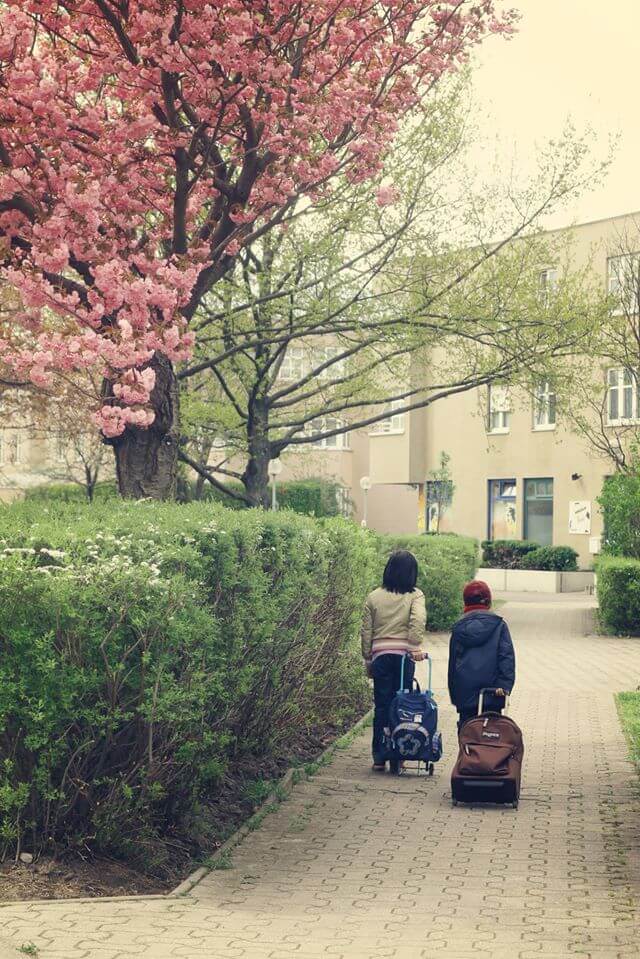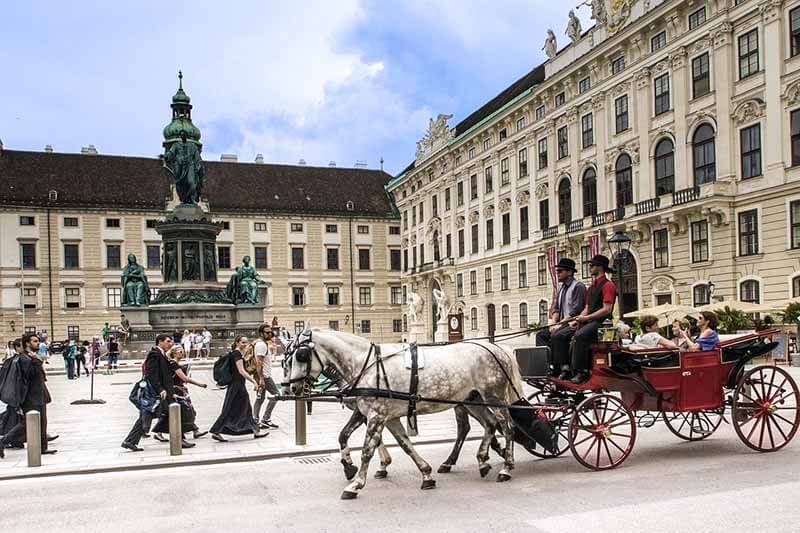
Vienna’s incinerator, commonly referred to as the Spittelau Waste Incineration Plant, has a unique history that combines functionality with distinctive design, reflecting the city’s commitment to both waste management and urban aesthetics.
Table of Contents
History
1. Early Development and Purpose (1969–1987)
- Construction and Purpose: The Spittelau Incineration Plant was originally constructed in 1969. It was built to address the growing waste management needs of Vienna, ensuring that the city’s refuse was effectively disposed of while also generating energy. The plant was strategically located near the city center to provide district heating to residential and commercial buildings.
- Functionality: As a waste-to-energy facility, the plant’s main purpose was to incinerate municipal solid waste, convert it into energy, and provide heating for the city. It was part of a broader strategy to reduce landfill use and leverage waste as a resource.
2. The Fire and Redesign (1987–1992)
- The 1987 Fire: In 1987, a major fire broke out at the Spittelau Incineration Plant, causing extensive damage to the facility. The fire halted its operations, and the city faced the challenge of either demolishing the plant or rebuilding it.
- Redesign by Friedensreich Hundertwasser: Rather than opting for a conventional repair or demolition, the city of Vienna decided to take a different approach. The Viennese artist and architect Friedensreich Hundertwasser was commissioned to redesign the plant. Hundertwasser, known for his vibrant, unconventional architectural style, saw this as an opportunity to merge environmental sustainability with his artistic vision. He transformed the Spittelau Incineration Plant into a visually striking landmark with colorful mosaics, undulating lines, and a golden tower, making it a symbol of Vienna’s innovative approach to environmentalism and urban planning.

3. Rebirth and Operation (1992–Present)
- Reopening in 1992: The redesigned incinerator reopened in 1992. The new facade and structure reflected Hundertwasser’s philosophy that even industrial buildings should be beautiful and integrated with nature. The plant’s exterior featured colorful tiles, irregular windows, and green roofs, making it a unique architectural statement.
- Function and Capacity: The plant resumed its original function of waste incineration, with a capacity to handle 250,000 tons of waste per year. It generates energy for about 60,000 households and provides district heating to over 50,000 households and 300 public buildings in Vienna. The incinerator is equipped with state-of-the-art technology to minimize emissions, ensuring that it meets high environmental standards.
4. Modern Impact and Significance
- Environmental Commitment: The Spittelau Waste Incineration Plant is a testament to Vienna’s commitment to sustainability. It plays a key role in the city’s waste management system, reducing the volume of waste sent to landfills and cutting down on greenhouse gas emissions. By generating both electricity and district heating, the plant contributes to Vienna’s goal of becoming a carbon-neutral city by 2040.
- Tourist Attraction: Beyond its environmental role, the Spittelau Incineration Plant has become a popular tourist attraction. People from around the world visit to see Hundertwasser’s unique design, learn about the plant’s waste-to-energy process, and explore the city’s broader sustainability initiatives.
 5. Cultural and Architectural Landmark
5. Cultural and Architectural Landmark
- Hundertwasser’s Legacy: The Spittelau Incineration Plant is now recognized as an example of how industrial infrastructure can be integrated into a city’s cultural fabric. Hundertwasser’s redesign has made the plant a cultural icon, blending environmental function with artistic expression, and it continues to stand out in the landscape of Vienna’s urban architecture.
Vienna’s incinerator, the Spittelau Waste Incineration Plant, has evolved from a purely functional piece of infrastructure to a symbol of the city’s dedication to sustainability and creativity. Its history reflects Vienna’s ability to adapt and innovate in the face of challenges, turning a fire-damaged plant into an architectural gem that serves both practical and aesthetic purposes.
Green
The Spittelau Waste Incineration Plant, is indeed cited as a significant reason why Vienna is considered one of the greenest cities in the world. The plant plays a crucial role in the city’s comprehensive environmental strategy, which emphasizes sustainability, energy efficiency, and innovative waste management practices. Here are some key points about how the Spittelau Incineration Plant contributes to Vienna’s status as a green city:
1. Efficient Waste Management
- Waste-to-Energy Model: The Spittelau Incineration Plant is a vital component of Vienna’s waste-to-energy strategy. By incinerating approximately 250,000 tons of waste annually, the plant significantly reduces the volume of waste that would otherwise end up in landfills. This approach aligns with Vienna’s aim to minimize landfill use and maximize the reuse and recycling of resources.
- Energy Production: The plant not only disposes of waste but also converts it into valuable energy. It produces electricity for around 60,000 households and supplies district heating for over 50,000 households and 300 public buildings. This dual-purpose use of waste exemplifies Vienna’s circular economy principles, where waste is viewed as a resource rather than a problem.
2. Reduced Greenhouse Gas Emissions
- Cutting Emissions: By incinerating waste in a controlled environment, the plant prevents the release of methane, a potent greenhouse gas that is typically emitted by decomposing waste in landfills. Additionally, the incineration process is designed to capture and filter harmful emissions, including particulates and dioxins, making it a cleaner alternative to traditional waste disposal methods.
- Contribution to Carbon Neutrality Goals: The energy produced by the plant substitutes for energy that would otherwise come from fossil fuels, further contributing to the reduction of Vienna’s carbon footprint. This aligns with the city’s goal of becoming carbon-neutral by 2040.
3. Integration with Urban Planning and Sustainability Goals
- District Heating System: The Spittelau Plant is part of Vienna’s extensive district heating network, which is one of the largest in Europe. This system uses the heat generated from waste incineration and other renewable sources to provide efficient heating to a large number of buildings. District heating is a more energy-efficient method than individual gas or electric heating systems, reducing the overall energy consumption of the city.
- Centralized Location for Better Resource Management: Located near the city center, the Spittelau Incineration Plant is strategically positioned to efficiently distribute energy to nearby homes and businesses, reducing the loss of energy that typically occurs when energy is transmitted over long distances.
4. Advanced Environmental Technologies
- Emission Control Technologies: The Spittelau plant employs state-of-the-art technologies to control and minimize emissions. It uses filters, scrubbers, and other technologies to capture pollutants, ensuring that the air quality remains high and that the plant meets stringent European Union environmental standards.
- Continuous Monitoring and Transparency: The plant is also equipped with continuous monitoring systems that track emissions in real-time. This data is often made available to the public, fostering transparency and community trust in the plant’s operations.
5. Symbol of Green Innovation and Public Engagement
- Architectural Landmark and Educational Resource: The plant, redesigned by Friedensreich Hundertwasser, serves as a cultural and educational site where residents and visitors can learn about sustainable waste management practices and green energy. This has helped raise public awareness about environmental issues and encouraged community engagement in sustainability efforts.
- Promoting Sustainable Urban Living: The unique design and functionality of the Spittelau Plant make it a visible and iconic representation of Vienna’s green initiatives, showcasing the city’s commitment to sustainability and innovation.
6. Recognition as a Green City
- Global Green City Rankings: Vienna has consistently ranked high in global green city rankings, such as the “Green City Index” by Siemens, and more recent studies like Resonance Consultancy’s “World’s Greenest Cities” report. The city’s waste management system, of which the Spittelau Incineration Plant is a key component, is often highlighted as a best practice in urban sustainability.
- Comprehensive Environmental Policy: Vienna’s environmental policies focus on various aspects, including waste management, renewable energy, green transportation, public green spaces, and air quality. The Spittelau Incineration Plant exemplifies the city’s holistic approach to sustainability, integrating waste management with energy production and urban planning.
The Spittelau Waste Incineration Plant’s role in waste management, energy production, and emission reduction makes it a cornerstone of Vienna’s environmental strategy. By turning waste into a resource and minimizing its environmental impact, the plant contributes significantly to Vienna’s reputation as one of the greenest cities in the world. It embodies Vienna’s commitment to innovative and sustainable urban solutions, demonstrating how environmental stewardship can coexist with economic development and cultural enrichment.

--------------------------Book your Vienna stay here!--------------------------








Leave a Reply